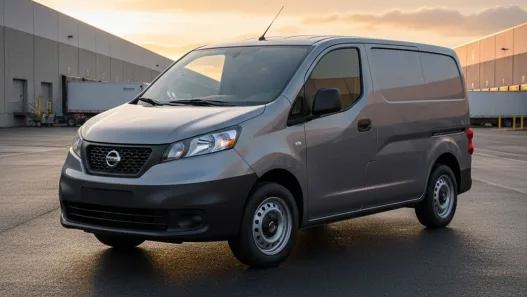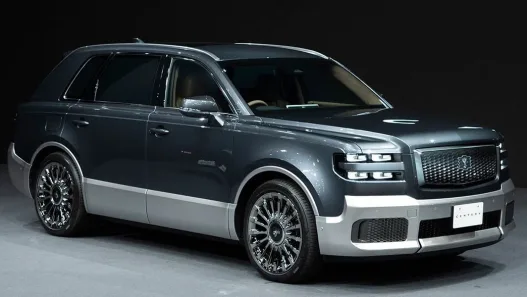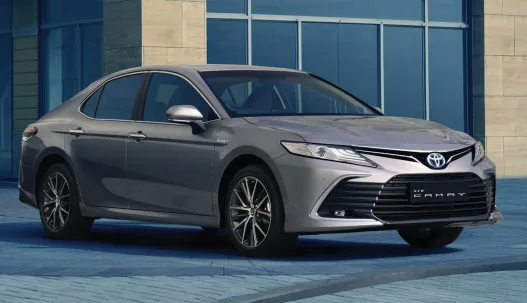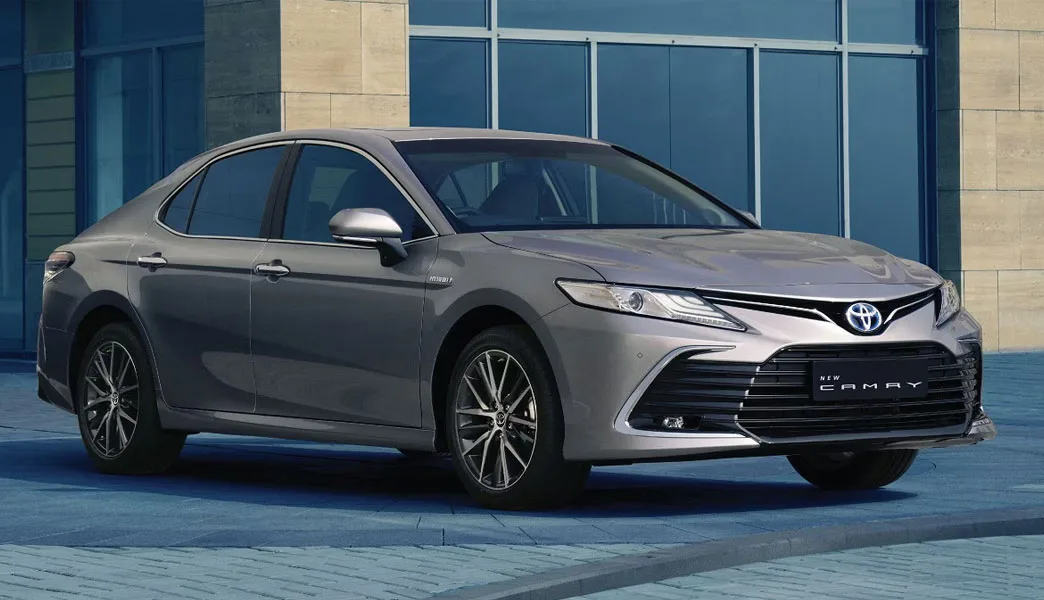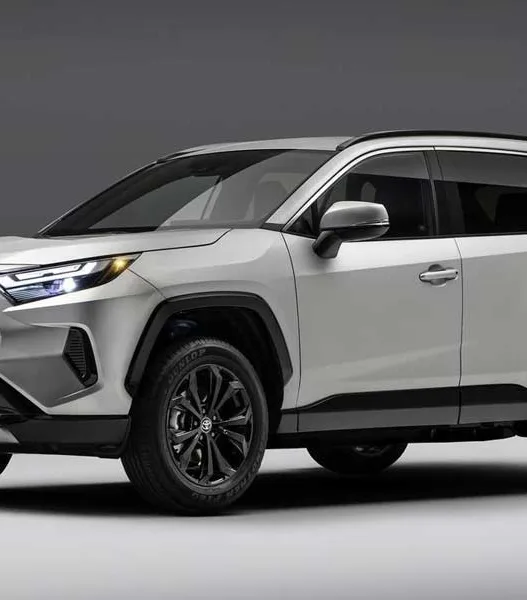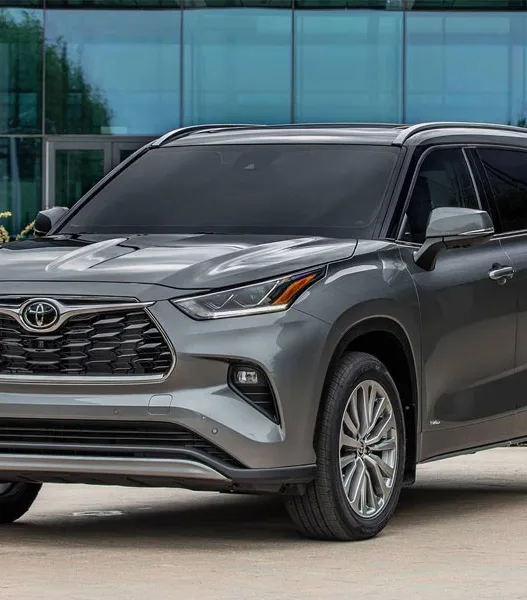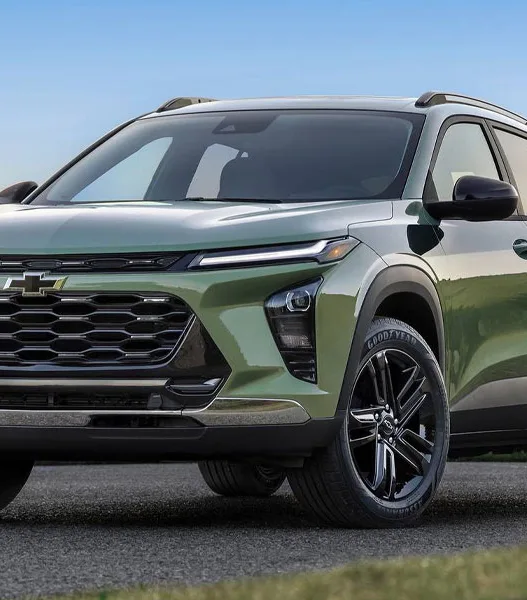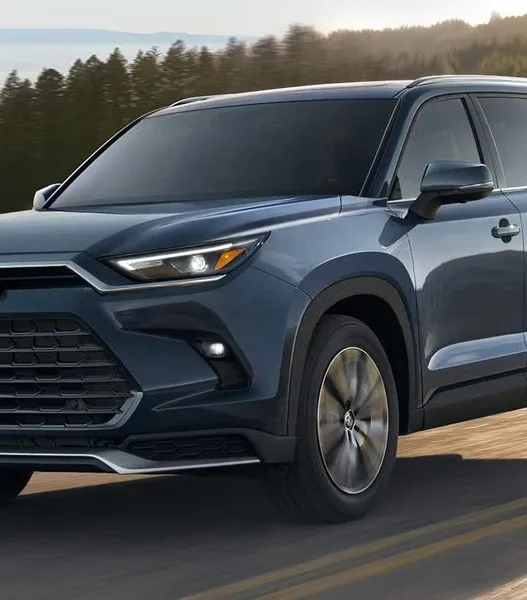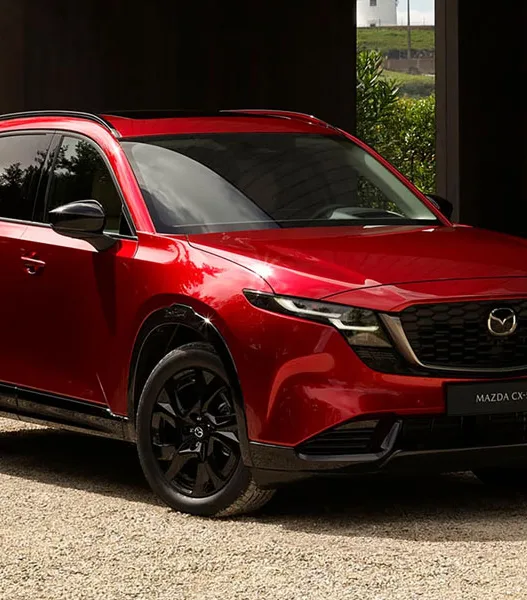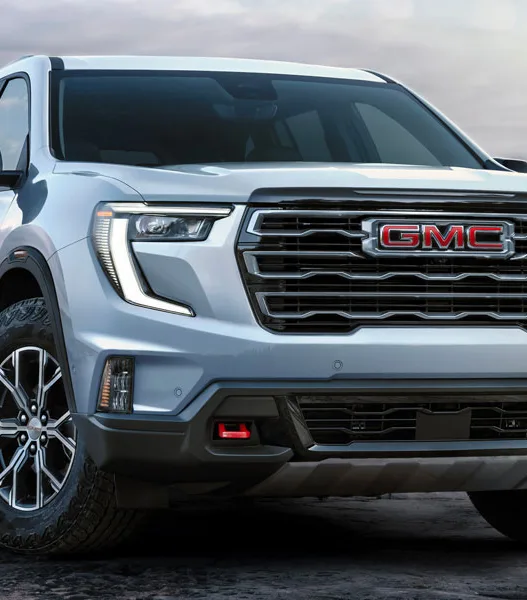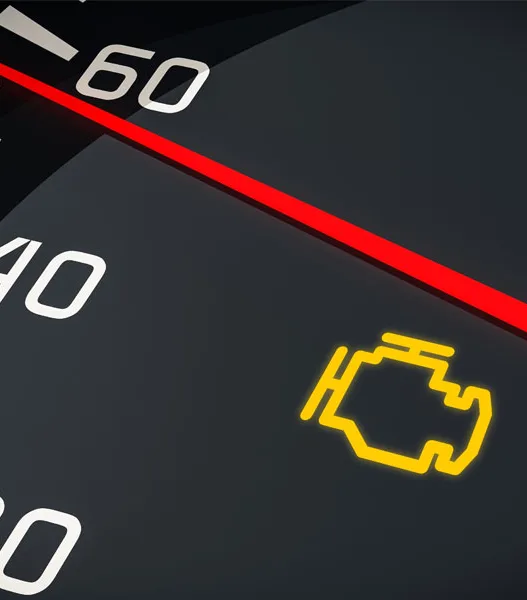When it comes to durable, reliable, and comfortable sedans, the Toyota Camry comes on almost everyone’s list. I have been researching cars for a long time and have seen the Camry’s name come up on top every time. But did you know that not every Camry model year is the best? Yes, that might sound unbelievable, but it’s true.
There have been a few model years of Camry that have disappointed owners, sometimes with engine problems, sometimes with transmission glitches, or simply with the poor quality of the interior.
Through this article, I will tell you which Toyota Camry model years you should avoid, based on reliable sources. It’s not just about the numbers, it’s the real story of the people who made the wrong choices.
Toyota Camry Red Flags: The Worst Years You Should Avoid
Year 2020
- Transmission Problems
- Quality Control Glitches
- Rattling and Creaking Sounds coming from the Interior
Year 2016
- Rough Shifting
- Braking Issues
Year 2012
- Infotainment System Problems
- Engine Noise and Vibration
- Electrical Failures
Year 2019
- Infotainment Connectivity Problems
- Engine Performance Issues
Year 2015
- Electrical Failures
- Transmission Issues
Year 2010
- Harsh Shifting
- Air Conditioning Failures
Year 2007-2009
- Excessive Oil Consumption
- Transmission Slipping
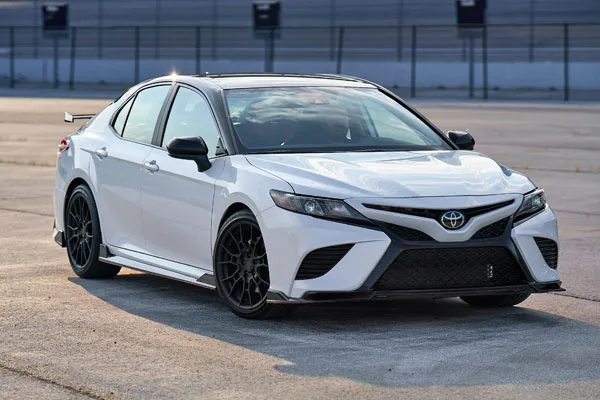
2020 Toyota Camry: A Closer Look at the Transmission Woes, Quality Control Issues, and Interior Noise Troubles
1. Transmission Problems
The 2020 Toyota Camry used to come with an 8-speed automatic transmission, but this modified system caused a lot of trouble. Many owners reported that the transmission often changed gears “by jerk” or by hooks. This problem was especially felt in traffic, where the vehicle requires a soft and smooth transmission.
There would be a delay in the car while shifting the gear, where the engine would keep revving, but the car would take time to move forward. This not only adversely affects driving comfort but can also be a safety hazard, especially when you’re changing lanes on the highway.
2. Quality Control Glitches
One of the major disappointments with the 2020 Toyota Camry was that many owners found glaring glitches in quality control. This should not be the case, especially in a car that is known for its premium feel.
Many owners complained about the panel alignment, where the joints of the exterior parts of the car did not fit properly. The door, hood, or trunk looked a bit jagged or uneven.
The quality of the paint was also not satisfactory. Many reported paint splashing, peeling, or minor scratches.
There were also fitment issues in the interior. Sometimes parts of the dashboard or center console felt loose or fitted in an unsuitable way.
All these small faults together harm the ‘luxury feel’ of the car. When you buy a new car, you expect everything to be perfect, but when such glitches come up, the joy of the new car goes sour.
3. Rattling and Creaking Sounds Coming From the Interior
Another major and common problem associated with the 2020 Toyota Camry was the rattling and creaking sounds coming from the interior. These sounds are often heard when you are driving on a bumpy road. These rattles usually came from the dashboard, door panels, centre console, or some other plastic parts.
Many owners also noted that when the vehicle was at a little extra speed, these sounds would become even louder. Sometimes these sounds are so disruptive that they do not stop completely, even when music is played or the window is closed.
This may seem like a small issue, but in the long run or on long trips, it has a very bad effect on the driving experience.
2020 Model Specifications
| Engine Type | 2.5-liter inline 4-cylinder |
| Base Engine Type | Gas |
| Valves | 16 |
| Horsepower | 203 hp at 6,600 rpm |
| Torque | 184 lb-ft at 5,000 rpm |
| Transmission | 8-speed shiftable automatic |
| Drivetrain Options | Front wheel drive |
| Fuel Tank Capacity | 15.8 gal |
| Mileage | 28-39 miles per gallon |
| Seating Capacity | 5 passengers |
| Cargo Capacity | 15.1 cubic feet |
| Front Legroom | 42.1 inches |
| Rear Legroom | 38.0 inches |
| Safety Features |
|
| Infotainment and Connectivity |
|
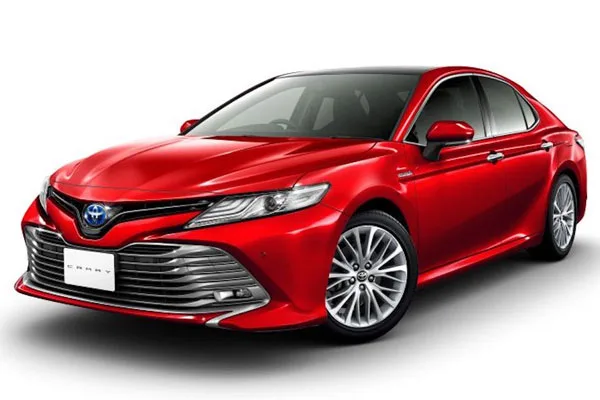
Infotainment Woes and Engine Performance Troubles in the 2019 Toyota Camry
1. Infotainment Connectivity Problems
Many users have reported that the Bluetooth connection often disconnects automatically, especially when you’re on a long drive or in an important call. This is not only annoying but can also be dangerous if you are driving while making a call.
Another drawback was that the touchscreen often became slow or laggy, sometimes even stopped responding. This problem proved to be more troublesome for most people who often use features like navigation or music control.
2. Engine Performance Issues
The 2019 Toyota Camry has a major engine problem. Many owners reported that when the car is driven at low speed, there are shocks felt in the engine. These shocks not only kill the driving experience, but they also affect the overall performance of the car.
This problem increases in light traffic or on urban roads. On the other hand, when the car is driven fast, the engine makes a lot of noise. This noise not only spoils the driving experience but also makes you feel that the engine is not working properly.
2019 Model Specifications
| Engine Type | 2.5-liter inline 4-cylinder |
| Base Engine Type | Gas |
| Valves | 16 |
| Horsepower | 203 hp at 6,600 rpm |
| Torque | 184 lb-ft at 5,000 rpm |
| Transmission | 8-speed shiftable automatic |
| Drivetrain Options | Front wheel drive |
| Fuel Tank Capacity | 16.0 gal |
| Mileage | 28-39 miles per gallon |
| Seating Capacity | 5 passengers |
| Cargo Capacity | 15.1 cubic feet |
| Front Legroom | 42.1 inches |
| Rear Legroom | 38.0 inches |
| Safety Features |
|
| Infotainment and Connectivity |
|
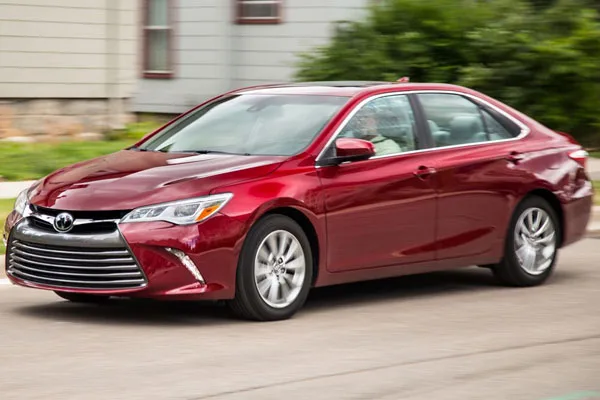
2016 Toyota Camry: A Bumpy Ride with Transmission and Braking Troubles
1. Rough Shifting
One major issue that 2016 Camry owners have pointed out is the rough shifting. Many drivers have said that the vehicle’s transmission shifts while selecting the gear is hard, which makes the driving experience feel a bit sluggish and confusing.
Solid exchanges and sounds coming from the transmission of the vehicle harm the smooth performance of the vehicle. Such shifting takes away the fun of driving, as it leads to bottlenecks with constantly shifting gears, which sometimes looks confusing and unwanted.
2. Braking Issues
Some of the problems associated with the braking system include that the braking functions are not fully effective, which causes the brake pads to not work evenly, and their response to brake application can be very slow or soft.
When there is a failure in the brake system in the vehicle, it becomes a matter of safety concern.
Many owners have reported that the brake pads make a different, wrong joint sound when braking, which becomes a cause of concern for them. In such a situation, if the driver has to stop immediately, the braking support of the vehicle decreases significantly, and it can cause accidents.
2016 Model Specifications
| Engine Type | 2.5-liter inline 4-cylinder |
| Base Engine Type | Gas |
| Valves | 16 |
| Horsepower | 178 hp at 6,000 rpm |
| Torque | 170 lb-ft at 4,100 rpm |
| Transmission | 6-speed shiftable automatic |
| Drivetrain Options | Front wheel drive |
| Fuel Tank Capacity | 17.0 gal |
| Mileage | 25-35 miles per gallon |
| Seating Capacity | 5 passengers |
| Cargo Capacity | 15.4 cubic feet |
| Front Legroom | 41.6 inches |
| Rear Legroom | 38.9 inches |
| Safety Features |
|
| Infotainment and Connectivity |
|

The 2015 Toyota Camry Struggles with Power and Performance
1. Electrical Failures
Some specific problems related to the electrical system of the 2015 Toyota Camry have caused great distress to customers. Many customers reported that the car’s electrical systems would suddenly turn on or off while they were driving. This led to the loss of essential functions such as AC and heaters, lighting, and interior control systems, making the driving experience extremely poor.
This problem can sometimes cause major damage, especially when some essential electrical components stop working at the right time, such as brake lights or headlights.
2. Transmission Issues
The 2015 Toyota Camry has also been found to have several serious problems with the transmission. Many owners reported that when they pressed the accelerator, the vehicle did not respond as intended. Very often, the vehicle would stall due to the interruption of the transmission.
It mainly happens on long journeys or on the highway. The transmission constraints severely hampered the smooth performance of the car and made the driving experience very tiring.
2015 Model Specifications
| Engine Type | 2.5-liter inline 4-cylinder |
| Base Engine Type | Gas |
| Valves | 16 |
| Horsepower | 178 hp at 6,000 rpm |
| Torque | 170 lb-ft at 4,100 rpm |
| Transmission | 6-speed shiftable automatic |
| Drivetrain Options | Front wheel drive |
| Fuel Tank Capacity | 17.0 gal |
| Mileage | 25-35 miles per gallon |
| Seating Capacity | 5 passengers |
| Cargo Capacity | 15.4 cubic feet |
| Front Legroom | 41.6 inches |
| Rear Legroom | 38.9 inches |
| Safety Features |
|
| Infotainment and Connectivity |
|

How Engine Noise and Vibration Affect the Comfort of the 2012 Toyota Camry
1. Electrical Failures
Some owners of the 2012 Toyota Camry have complained of electrical failures. It causes functions, such as car lights, power windows, and other electric systems to malfunction. It not only ruins the driving experience, but it also raises safety concerns.
For example, if a vehicle’s headlight or tail light malfunctions, it can pose a safety hazard to other drivers on the road. Electrical system malfunctioning also sometimes affects a car’s infotainment system, causing issues such as power-on and off problems or the touch screen not working properly.
This affects the riding experience of the car in a very negative way, as the user has to reset the system every time.
2. Infotainment System Problems
The 2012 Toyota Camry’s infotainment system had some weaknesses in comparison to other better models. Many owners complained that there were frequent glitches in the system, which greatly affected their riding experience.
The inability to operate the system sometimes caused severe problems in the use of the infotainment system. As a result, many users complained of the screen freezing and lack of sound, which spoils the infotainment experience.
These glitches were sometimes irreversible, which meant that some functions of the system, such as radio, stereo, or navigation, did not work properly. Whenever users used the touch screen, they faced a lot of obstacles and sponges. It was especially time-consuming to change the settings or choose the music track.
These problems could not be fixed with just one small change, and most users needed to repair or replace the infotainment system.
3. Engine Noise and Vibration
Many owners have also complained about the excessive noise and vibration coming from the engine. This problem can be caused by mechanical failure or structural damage to the engine, which makes the engine sound louder and greatly affects the stability of the ride.
The excessive noise of the engine not only affects the comfort, but it can also damage some parts of the vehicle. As such, repairs may be required to remove the sound and vibration issue, which results from the loosening or damage of various components.
These excessive engine noise and vibration make the 2012 Camry significantly less comfortable in comparison to other model years.
2012 Model Specifications
| Engine Type | 2.5-liter inline 4-cylinder |
| Base Engine Type | Gas |
| Valves | 16 |
| Horsepower | 178 hp at 6,000 rpm |
| Torque | 170 lb-ft at 4,100 rpm |
| Transmission | 6-speed shiftable automatic |
| Drivetrain Options | Front wheel drive |
| Fuel Tank Capacity | 17.0 gal |
| Mileage | 25-35 miles per gallon |
| Seating Capacity | 5 passengers |
| Cargo Capacity | 15.4 cubic feet |
| Front Legroom | 41.6 inches |
| Rear Legroom | 38.9 inches |
| Safety Features |
|
| Infotainment and Connectivity |
|
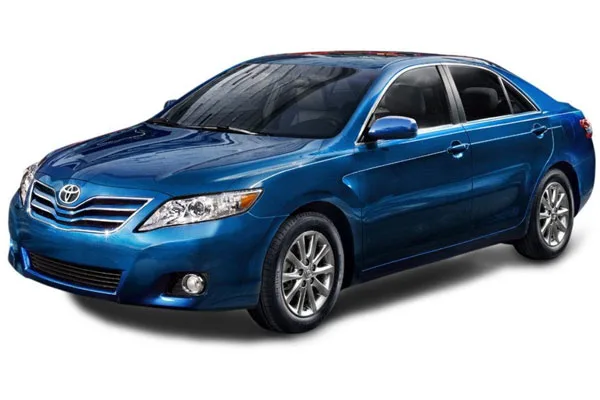
The Blazing Heat and the Broken Air Conditioning in the 2010 Toyota Camry
1. Harsh Shifting
The problem of harsh shifting associated with the automatic transmission in the 2010 Toyota Camry was quite common, hampering the riding experience for many owners. During the shift of gears, strange sounds were coming from the engine or gearbox of the vehicle, which did not give a smooth experience to the rider.
2. Air Conditioning Failures
Air-conditioning issues were also a major problem with the 2010 Toyota Camry. Many owners complained that the vehicle’s air conditioner was becoming too shallow and inefficient. This problem caused a lot of trouble in the summer season.
This problem not only caused inconvenience to the rider, but also made the riding experience very unbearable, especially in high temperatures.
Due to the faulty component of the air conditioning, air used to come into the vehicle many times, but it did not cool down properly. The problem could have persisted for a long time, forcing the owners to make a complete or partial replacement of the AC system.
2010 Model Specifications
| Engine Type | 2.5-liter inline 4-cylinder |
| Base Engine Type | Gas |
| Valves | 16 |
| Horsepower | 169 hp at 6,000 rpm |
| Torque | 167 lb-ft at 4,100 rpm |
| Transmission | 6-speed shiftable automatic |
| Drivetrain Options | Front wheel drive |
| Fuel Tank Capacity | 18.5 gal |
| Mileage | 22-32 miles per gallon |
| Seating Capacity | 5 passengers |
| Cargo Capacity | 15.0 cubic feet |
| Front Legroom | 41.7 inches |
| Rear Legroom | 38.3 inches |
| Safety Features |
|
| Infotainment and Connectivity |
|

The Oil Thirst: A Persistent Struggle with the 2007-2009 Toyota Camry’s Engine
1. Excessive Oil Consumption
One of the major problems that many customers have faced with the 2007-2009 Toyota Camry is the excessive consumption of oil. This model uses a 2.4-liter inline 4-cylinder engine, which consumes a lot of oil due to its design.
When this engine consumes undesirable oil, it starts to cause problems, because the engine can be difficult to run properly if the oil is not fully consumed for a long time.
There was a particular flaw in the design of the engine’s piston rings, which made it difficult to remove oil. Along with this fault, the car used to consume more oil, and if you had a low oil temperature throughout the day, you may be prone to more repairs.
2. Transmission Slipping
Another major problem that many customers experienced with the 2007-2009 Toyota Camry was transmission slipping. Many owners reported that they had problems shifting gears. This meant that the gears were not changing at the required time, as the car should have been doing a softer or faster shift, but it wasn’t.
When this kind of glitch occurs in the transmission, the driving experience of the car is spoiled. The power of the engine is not able to operate properly with the clutch, due to which the car does not drive properly. This problem is especially aggravated when the car uses long-duration or gear switches in traffic for a long time.
This messy transmission problem can get worse and get worse over time. If this problem is not corrected soon, it can also affect the longevity of the car. As the transmission becomes cluttered, the ability of the gears to work properly is reduced, which can cost you additional repair costs.
2007-2009 Model Specifications
| Engine Type | 2.4-liter inline 4-cylinder |
| Base Engine Type | Gas |
| Valves | 16 |
| Horsepower | 158 hp at 6,000 rpm |
| Torque | 161 lb-ft at 4,000 rpm |
| Transmission | 5-speed automatic |
| Drivetrain Options | Front wheel drive |
| Fuel Tank Capacity | 18.5 gal |
| Mileage | 21-30 miles per gallon |
| Seating Capacity | 5 passengers |
| Cargo Capacity | 15.0 cubic feet |
| Front Legroom | 41.7 inches |
| Rear Legroom | 38.3 inches |
| Safety Features |
|
| Infotainment and Connectivity |
|
From 2007 to 2020: Toyota Camry Generations Compared
| Specifications | 2007-2009 | 2010 | 2012 | 2015 | 2016 | 2019 | 2020 |
|---|---|---|---|---|---|---|---|
| Engine Type | 2.4-liter inline 4-cylinder | 2.5-liter inline 4-cylinder | 2.5-liter inline 4-cylinder | 2.5-liter inline 4-cylinder | 2.5-liter inline 4-cylinder | 2.5-liter inline 4-cylinder | 2.5-liter inline 4-cylinder |
| Base Engine Type | Gas | Gas | Gas | Gas | Gas | Gas | Gas |
| Valves | 16 | 16 | 16 | 16 | 16 | 16 | 16 |
| Horsepower | 158 hp at 6,000 rpm | 169 hp at 6,000 rpm | 178 hp at 6,000 rpm | 178 hp at 6,000 rpm | 178 hp at 6,000 rpm | 203 hp at 6,600 rpm | 203 hp at 6,600 rpm |
| Torque | 161 lb-ft at 4,000 rpm | 167 lb-ft at 4,100 rpm | 170 lb-ft at 4,100 rpm | 170 lb-ft at 4,100 rpm | 170 lb-ft at 4,100 rpm | 184 lb-ft at 5,000 rpm | 184 lb-ft at 5,000 rpm |
| Transmission | 5-speed automatic | 6-speed shiftable automatic | 6-speed shiftable automatic | 6-speed shiftable automatic | 6-speed shiftable automatic | 8-speed shiftable automatic | 8-speed shiftable automatic |
| Drivetrain Options | Front wheel drive | Front wheel drive | Front wheel drive | Front wheel drive | Front wheel drive | Front wheel drive | Front wheel drive |
| Fuel Tank Capacity | 18.5 gal | 18.5 gal | 17.0 gal | 17.0 gal | 17.0 gal | 16.0 gal | 15.8 gal |
| Mileage (MPG) | 21 city / 30 highway | 22 city / 32 highway | 25 city / 35 highway | 25 city / 35 highway | 25 city / 35 highway | 28 city / 39 highway | 28 city / 39 highway |
What are the Best Toyota Camry Model Years?
The Toyota Camry has been the favorite of people for a long time. Above, we have mentioned some worst Camry model years. Now let’s talk about some of the model years that are considered the best.
- 2025
- 2024
- 2023
- 2021
- 2018
- 2014
- 2013
- 2004
Talking about the 2025 and 2024 model years, both these Camrys are very modern and full of technology. They get a new hybrid engine that delivers great mileage and gives a very simple and comfortable experience while driving. Also, for safety, Toyota has added features such as adaptive cruise control, lane-keep assist, and automatic emergency braking to these models. If you want a new, reliable, and technologically advanced car, the 2025 or 2024 Camry is the best choice.
Now, if we talk about the 2023 and 2021 models, both of them have also been very good. The 2023 Camry had minor refreshes, such as a new interior design and improved safety features. The 2021 model is known for its superior ride comfort and remarkable build quality. Both models also get a hybrid option, which gives much better mileage than the regular petrol model.
The 2018 Camry model was not only famous for its desirable styling and high-quality interior, but also for its excellent ride maneuverability.
Now, if we go back to the earlier years, the 2014 and 2013 models have also proved to be very reliable. The 2014 Camry had several improvements that made driving comfortable. The highlight of the 2013 model was its superior fuel efficiency and excellent longevity. These two models also don’t cost much to repair, which makes them a good choice even today if you’re looking for a budget-friendly and reliable car.
Finally, if you’re looking for a classic Camry model, the 2004 Camry is a must-talk. This model was famous for its extremely strong engine, easy repair, and longevity. There are still many 2004 Camrys running on the roads, which is a testament to Toyota’s reliable engineering.
Wrapping Up
The Toyota Camry has left a mark of reliability over the years, but not every model of car shines. If you want your driving experience to be clean, tidy, and enjoyable, it’s best to get away with a few model years.
In light of our observations, Camry models manufactured between 2007 and 2009 experienced excessive oil consumption and transmission problems. Then the year 2010 was a victim of the transmission. And there are 2015, 2016, 2019, and 2020 models that also have their own set of issues.
But don’t worry, technology keeps on advancing, and every year brings new suggestions. Now, you know exactly which years to stay away. Don’t forget to come back for new video reviewers, detailed analysis, and expert tips on Engine Enigma for your journey ahead.
Continue to drive safely!
Frequently Asked Questions
1. Which Model Years of the Toyota Camry Should be Avoided?
The Camry model years of 2007-2009, 2010, 2012, 2015, 2016, 2019, and 2020 have reported some serious problems, which is why they should be avoided.
2. What were the Main Problems Encountered in the 2007 Camry Model?
Excessive oil consumption and transmission slipping were common in the 2007 Camry.
3. How Do You Address Issues in The Toyota Camry?
In case of red flags like vibration, strange sound, oil or water leakage stains, or shift jerk, they should be checked immediately.
4. Which Toyota Camry Model Years are Reliable?
Some early models, like the 2000 and 2001, had head gasket failures and rust issues. While not all are problematic, buyers should be cautious with high-mileage examples from these years.
5. How Much will the Repairs Cost?
Depending on the severity of the issue, a basic judgment starts from $600 and can go up to $1000-$5000 for major repairs like transmission and engine problems.







